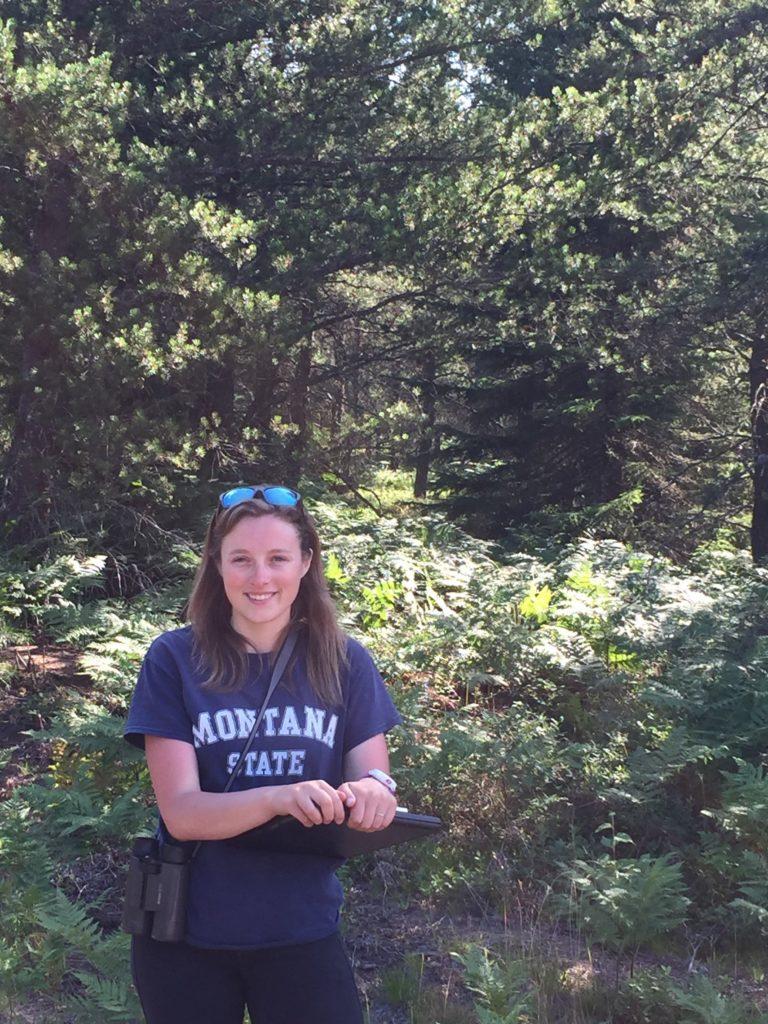When you see a bird in Marquette flying through the trees searching for its next meal, the first thing you might think about is what it’s looking for, and the last thing you might think about is what food exactly it’s smelling for.
The latter of the two senses is precisely what biology graduate student Katie Bjornen was researching, having wrapped up her thesis defense and public seminar on “Avian Foraging Response to Jack Pine Volatiles,” both of which took place on Feb. 23.
Bjornen investigated whether birds can smell chemical compounds that are released from trees when predatory insects attack them. These “volatile” chemicals are released as a part of trees’ metabolism, however, these chemicals change when the insects attack. The tree is essentially “crying for help,” Bjornen said. These chemicals may call in birds to come forage, or eat the insects, which was the main aspect of Bjornen’s research.
Her research was mainly focused on Jack pine trees, which are concentrated in the area around Sawyer International Airport, Bjornen said.
“One thing I joke about with my research is that it’s basically just telling people that birds can probably smell,” Bjornen said and gave a laugh.
Bjornen said she has worked for two and a half years on this research, and it’s satisfying to look back and see the work she’s done. She plans to polish up her thesis for publication in a scientific journal, and that’s the next step, she noted.
Bjornen loves anything that gets her outside. As an outdoor enthusiast with passions for hiking, skiing and mountain biking, she sees her passions reflected both in and outside of her field studies.
“Both biology and field ecology all tie in really well to wanting to spend time outside,” she said. “I’ll be out riding my bike and I’ll stop and see some warbler foraging, and I can actually think about ‘Oh man, maybe that guy is smelling the volatile chemicals from that tree, and that’s why he’s foraging there.’”
Bjornen became interested in researching Jack pines through the bird research of professor Alec Lindsay, her adviser. This is the first time that anyone has gone out into the field and shown that birds are flocking to particular trees that
release certain chemicals, Lindsay said.
Bjornen is curious about the world around her, Lindsay said. She is sharp, and a dedicated and a hard worker—and it shows, he said.
“Part of what’s exciting about [Bjornen’s] work is that it’s another example of how in the biological world around us, there’s all types of amazing phenomena,” Lindsay said. “Using science and elbow grease, we can all go out and explore it and hopefully come to understand our world a bit better.”
Lindsay assisted in incorporating undergraduate work into Bjornen’s research through his lab. Freshman double major in fisheries and wildlife management and pre-veterinary Marissa Trombley was one of the students involved in graduate students’ biology research.
Bjornen took Trombley under her wing in the beginning of the school year, Trombley said. As one of the first graduate students she interacted with, Bjornen was kind and patient with any questions she had, Trombley said.
Trombley, along with other graduate students, plan to do follow-up research resulting from Bjornen’s thesis.
“This was a unique project that [Bjornen] came up with that she did for her thesis, and it’s because of that that we have something to build off of and continue further research, which is pretty exciting,” Trombley said.






























